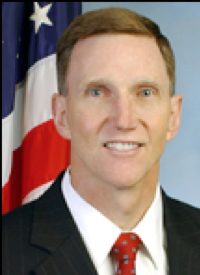
Though the Transportation Security Administration promised the U.S. Senate it would conduct further studies into the safety of radiation-firing body scanners used at airports nationwide, it has since backed away from that promise. TSA head John Pistole (left) is now claiming that a previously completed Inspector General’s report validates his assertions that the machines are not harmful.
On November 2, Pistole told the Senate Homeland Security committee that the TSA would be furthering independent research into the safety risks associated with the full-body scanners currently in use. Appearing at another congressional hearing on November 9, however, he reneged on that promise, saying that earlier independent studies have already proven the safety of the technology. I am concerned that theres a perception that theyre not as safe as they could be, he asserted.
Analysts say there is good reason for such a perception, however. A report on airport X-ray scanners filed by ProPublica reveals that despite evidence that the scanners could cause anywhere from six to 100 U.S. airline passengers each year [to] get cancer, a variety of expert testimonies on the dangers of the technology, and European policies that have actually banned the use of the scanners, the TSA has elected to continue the use of the scanners nationwide. As noted by The New Americans Michael Tennant, Whats worse, the TSA has other, safer types of scanners, known as millimeter-wave scanners, that the agency says are as effective as the backscatter scanners; but it has chosen to continue deploying the backscatter scanners even though they could adversely affect the health of the flying public.
The author of the ProPublica report, Michael Grabell, contends that the TSA has ignored concerns regarding the machines from both the public and from the scientific experts:
It skipped a public comment period required before deploying the scanners. Then, in defending them, it relied on a small body of unpublished research to insist the machines were safe, and ignored contrary opinions from U.S. and European authorities that recommended precautions, especially for pregnant women. Finally, the manufacturer, Rapiscan Systems, unleashed an intense and sophisticated lobbying campaign, ultimately winning large contracts.
Still, Pistole attempted to assuage concerns regarding the machines by promising further studies on the technology. During another Nov. 9 hearing this one before Senate Committee on Commerce, Science and Transportation he commented, My strong belief is those types of machines are still completely safe… If the determination is that this IG study is not sufficient, then I will look at still yet another additional study.
Pistole made similar assertions to CNN:
There are those who continue to express concerns, and so I want to do everything that I can to reassure those people that these machines are as safe as possible.
That being said, I just learned about an inspector general report that is in draft form that validates those prior studies, so that may suffice. Well work with Congress to see whether that addresses their concerns.
However, the report in question mentions merely the effectiveness of the TSA monitors and backscatter machines, not their safety aspects.
In a written statement, Sen. Susan Collins (R-Maine) commented,
What I asked for and what the administrator committed to was an independent study on the health effects of AIT (advanced imaging technology) machines, not just a study on whether TSA is doing an adequate job of inspecting, maintaining and operating AIT machines, which I understand is the approach of the inspector generals report.
I hope the Obama administration is not backing away from an independent study. Travelers are concerned that the radiation emitted from these machines may be damaging to passengers health.
Analysts note that if there were ever a time for the TSA to assuage concerns over the body scanners, it is now, as theProPublica report and a report featured by PBSNewHour entitled, U.S. Government Glossed Over Cancer Concerns, has redirected the publics attention to the safety hazards associated with the scanners.
The report reveals that the FDA rejected the advice of a 1998 expert panel, which concerned about the widespread use of the X-ray body scanners, including in airports had recommended that the agency set a mandatory federal safety standard for the machines.
The European Commission did, however, adopt those recommended guidelines, prohibiting the use of the X-ray body scanners utilizing ionizing radiation. In order not to risk jeopardizing citizens health and safety, only security scanners which do not use X-ray technology are added to the list of authorized methods for passenger screening at EU airports, a press release reads.
The controversy surrounding the body scanners has forced the Electronic Privacy Information Center (EPIC) to file a motion for summary judgment in its ongoing Freedom of Information Act lawsuit against the Department of Homeland Security. The EPIC has been attempting to force the DHS to disclose documents that contain information related to radiation testing results, agency fact sheets on body-scanner radiation risks, and images produced by the machines.
The EPIC had previously obtained documents detailing the radiation risks, which revealed that the TSA and head of the DHS publicly mischaracterized the findings of the National Institute of Standards and Technology.
A large number of independent scientists and respected universities and health organizations have warned about the health threat related to the use of the scanners. John Sedat, a University of California professor of biochemistry and biophysics and a member of the National Academy of Sciences, submitted a letter to White House science czar John Hodren, identifying specific risks posed to children and the elderly by the machines. The letter read in part:
It appears that real independent safety data do not exist…. There has not been sufficient review of the intermediate and long-term effects of radiation exposure associated with airport scanners.
There is good reason to believe that these scanners will increase the risk of cancer to children and other vulnerable populations.
The TSA continues to insist that the radiation emitted by the machines is equal to the amount released during just two minutes of a flight; however, it has failed to acknowledge that the machines specifically target certain areas of the skin and muscle tissue.
The Inter-Agency Committee on Radiation Safety indicated that pregnant women and children are particularly at risk by the machines, and scientists at Columbia University have stated that the X-ray machines emit 20 times more radiation than originally estimated.
If all 800 million people who use airports every year were screened with X-rays then the very small individual risk multiplied by the large number of screened people might imply a potential public health or societal risk. The population risk has the potential to be significant, stated Dr. David Brenner, head of Columbia Universitys center for radiological research.


